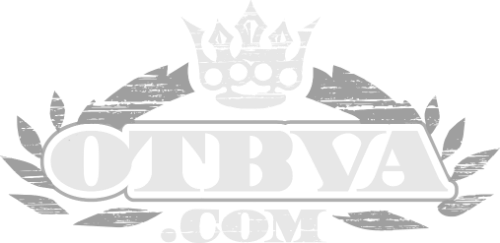Jacked. Ripped. Swole. Cut. Shredded. All words to describe the serious gym-rat, but with different meanings. Do you know the differences?
Whether you’re interested in bulking up or cutting mass, there’s a strategy to help you achieve your goals. The approach you taking to lifting is half the battle. The other half is fought in the kitchen. Your goals will dictate your approach.
So, if you’re interested in learning more about bulking and cutting, keep reading. You’ll learn everything you need to know.
Bulking and Cutting
What are the differences between these two approaches? Quite a bit, actually. While both terms are reserved for the ultra-fit, they describe two very different results.
Bulking has to do with adding mass. It combines heavy lifting with high caloric intake to promote growth. Think the Rock or Chris Evans after he becomes Captain America.
Cutting, on the other hand, is the opposite approach. It’s concerned with shredding body fat to reveal a tight, sculpted body. Think Paul Rudd’s Ant-Man body. He may look like the ageless comedian with a shirt on, but turns heads as soon as he reveals those abs.
However, as different as they may be, they can be used as a roadmap to achieve peak fitness. A common practice is to bulk in the winter then cut in the spring. That lets you increase your mass when heavier clothing can help hide any flab. Then, you can burn off all that extra weight in time for tank top weather.
Which Approach to Take
Not sure whether to focus on bulking or cutting? A good way to determine the right choice is to measure your body mass index. A BMI of around 15% is typical of fit-looking people. If you’re below that number, you’ll likely want to bulk. If you’re over it, you might want to consider cutting.
The number of calories you consume matter. You need to balance your proteins, fats, and carbohydrates to meet your goals. Supplements can help with both phases, too. Visit this site to see what options are available.
How to Bulk
If you decide to add mass, you’re going to want to adopt a more-is-more attitude. Heavier weights and extra servings. The goal is to increase both what you lift and how much you eat.
To make sure you’re gaining weight the proper way, start by increasing your calories by 300-500 a day. You’ll want to make sure you’re getting 1.5-2 grams of protein for each pound of body weight. This makes sure that you’re muscles are getting the fuel they need to grow.
Fat is an often undervalued aspect of dieting. It’s also incredibly important for cognitive function, metabolic health, and hormone regulation. Focus on healthy fats and avoid trans fats at all costs. Trans fats will cause more problems than they’re worth, whereas healthy fats will give you a boost.
Finally, you’re going to want a lot of carbs. This will be the largest component of your diet by far. Low-glycemic carbs are recommended but, since mass-building is the goal here, don’t worry too much. Do try and limit overly processed foods, though.
Aim for a 0.25-.5% increase in weight a week. it may seem like a small number, but if you gain too much too quickly, you’re likely adding more fat than muscle.
Everyone metabolizes food differently. We all respond to exercise differently, as well. Monitor your progress and make adjustments as needed. If you’re gaining too quickly, cut your calories back. Likewise, if you seem to have stalled out, increase your caloric intake.
There is no perfect formula. It’s up to you to monitor where your needs take you.
How to Cut
The challenge with cutting mass is making sure you lose weight without losing muscle. You need to manage your calories carefully to ensure that your BMI decreases but your muscles stay the same size.
The best way to do this is by tweaking your fat and carb intake.
The first step is to increase your protein consumption slightly. The body can typically only manage about 30 grams of protein an hour, so you don’t need to go crazy with it. But not only is protein necessary to keep your muscles growing, but it will help you feel satiated despite eating fewer calories.
Increasing your fat helps with this as well. Since fat takes the longest to metabolize, an increased fat intake will help you feel full longer. The downside is that it can cause volatility in hormonal function. Start by consuming 1 gram of fat per kilogram of body weight per day and adjust as needed.
Finally, you’ll need to limit your carb consumption. You need to be really smart with the carbs you eat, too. Anything processed is an immediate no-no. Instead, stick to low-glycemic carbs. Make sure that you are getting enough to maintain proper function, though. Too few carbs can lead to fatigue, dizziness, and more.
You should be able to lose weight at a quicker rate than you can gain it. Aim to lose 0.5-1% of your body weight a week. Losing more than that means that your burning muscles mass as well as fat. If you’re losing less, cut 250-500 calories a day and see how that works.
Final Thoughts
Bulking and cutting cause drastic changes in the body. It’s essential that you’re mindful of how you’re body responds to these changes. It’s always recommended that you consult with a physician before embarking on any major changes in diet and fitness.
Keeping track of your progress will allow you to properly assess what’s working on what’s not. Make changes as needed, but always make sure your body is responding well. If you notice adverse effects from with increasing or decreasing your mass, stop what you’re doing and seek help. A better-looking body isn’t worth it if it ends up causing long-term problems.
Visit our site for more lifestyle ideas to make the most out of your life.

